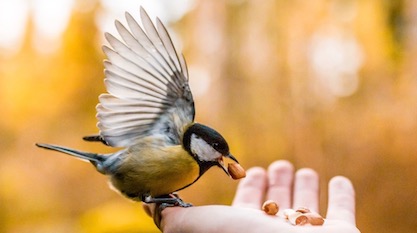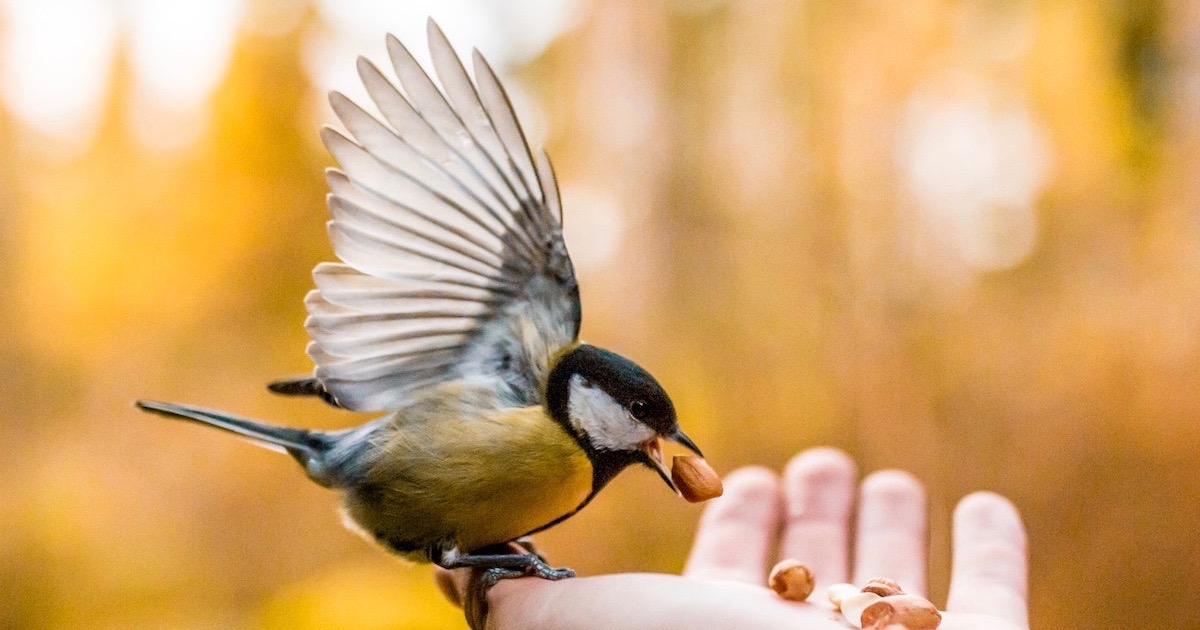 Evolution
Evolution
Birds and Bats: How Bright Is Evolutionary Light?


The media are generous with claims that new findings “shed light” on evolution. Some examples suggest that the light shed is below the visible spectrum.
For the Birds
For instance, in an article about the unique features that set birds apart from other vertebrates, Current Biology promises, “New fossil discoveries and advances in genomics and have shed light on the evolution of these remarkable differences.” But then, diving into the gizzard of the article by Michael Gross, “How Birds Evolved to Be Different,” the reader finds bluffing and excuses for the empirical darkness about bird evolution.
Even with the current fairly specific knowledge of their genetic place in the tree of life, where they branch out from the dinosaurs and count crocodilians as their closest surviving relatives, birds still pose many questions that science is only beginning to answer. How did their peculiar reproduction system, sound production, and migration behaviour evolve? And just how did they make it through the extinction event that wiped out the rest of the dinosaurs? [Emphasis added.]
Exploring this article for solid answers, the one finds the following:
Reproduction: As Gross notes: “today’s birds are the only animals reproducing from a single functional ovary and oviduct. They also tend to use a bone-like structure known as medullary bone as a calcium reservoir to assist with the production of the egg shell, they lay remarkably large eggs compared with their body size, and many species tend to invest in brood care.” Can evolutionary theory explain these unique traits? “Which of these features evolved among the dinosaurs, and which only came up after their demise is a matter of much research and also some debate,” he says. The single dinosaur fossil he references accounts for only a couple of dubious similarities, and some fatal differences.
Bird song: Another unique trait of birds is the syrinx, the avian voice box. Did it evolve? Gross admits, “Intriguingly, they produce their sounds with an organ that does not exist in other vertebrates, not even in their closest living relatives, the crocodilians.” Another problem: dinosaurs late in the Cretaceous did not have it. “Thus, the Cretaceous was the time when birds and possibly some of their dinosaur relatives came up with the new sound instrument, while reptiles and all other vertebrates show no trace of it,” he puzzles. “But why did birds evolve a new instrument when they already had one?” (Good questions. One might ask whether birds “evolved it” by intelligent design.) Proving that the syrinx is efficient for long-distance communication using resonator experiments makes for fine science, but assuming that it evolved because it provides “an evolutionary advantage” begs the question.
Survival: Michael Gross discusses how delicate birds survived after the impact that presumably drove the mighty dinosaurs extinct. His explanation is that dino-birds, living on seeds, found more food. Then, they were better positioned to diversify and exploit all the new niches available, evolving back to eat anything and everything, even other birds. Once again, though, this begs the question of evolution rather than shedding light on it. When in doubt, say “it’s complicated”:
The remarkable diversity of the group appears to have multiple and complex reasons, as it cannot be reduced to simple effects of climate shifts or continent separations.
Quoting one researcher involved in a “major effort to clarify the evolutionary history” of perching birds, he adds, “our results indicate more complex mechanisms were at play to spark bursts of passerine speciation around the globe.”
Chromosomes: Why do male birds have ZZ chromosomes and female birds have ZW chromosomes? Don’t expect a solid answer. Gross only points to a possibility that “four separate non-recombining regions of different evolutionary age” might represent evolutionary stages, aided by some mumbo-jumbo with non-coding DNA. It exists, therefore it evolved.
Intelligence: Why are birds so smart? Observing that they are smart does not “shed light” on how they got that way. Where was a random mutation that got selected for intelligence? None is presented. It looks like bait and switch. The reader wanted light and got a song and dance.
Flight: For this most wondrous of bird abilities, Gross totally ignores how flight originated. He only talks about diversification, and “convergent evolution” in the six species that lost the ability to fly. Darwin devolves, indeed.
The dazzling light of evolution having underwhelmed the reader, Gross decides to pivot and talk about climate change after first affirming that the light of Darwin was really there in case you missed it. “Having emerged [evolved] from the last mass extinction flying and singing, birds are now facing a new threat to their survival, caused by the man-made losses of forest habitats and insect prey, along with climate change.”
Batting Around Possibilities in the Darwin Cave
An equally dramatic group of animals, bats astound learners with their aerobatics and echolocation. Over 1/7 of all mammals are bats! Surely evolutionary theory can shed light on how this large group of animals garnered their distinctive abilities, can’t it?
In a PNAS paper, “A metaanalysis of bat phylogenetics and positive selection based on genomes and transcriptomes from 18 species,” six evolutionists attempt to shed light on how this amazing group of flyers came to be.
Here we lay out a systematic analysis of parameters and produce an advanced pipeline for curating orthologous gene alignments from combined transcriptomic and genomic data, including a software package: the Mismatching Isoform eXon Remover (MIXR). Using this method, we created alignments of 11,677 bat genes, 1,107 of which contain orthologs from all 18 species. Using the orthologous gene alignments created, we assessed bat phylogeny and also performed a holistic analysis of positive selection acting in bat genomes. We found that 181 genes have been subject to positive natural selection.
Wow! With such powerful software tools and such a rich data set, we’re going to get evidence of natural selection — and not just ordinary selection, but positive selection! Turn on the lights. Now we will see the evolution of bats shining brightly!
One problem. The evolutionists are confused. Positive selection is supposed to indicate new functions, traits, and progress up the tree of life. What would you predict would be the major kinds of traits that Darwin’s mechanism would improve? Would it be … the bat immune system? Would it be … collagen?
Enrichment analysis shows these positively selected genes to be primarily related to immune responses but also, surprisingly, collagen formation….
Again they are surprised:
Surprisingly, 8% are known to be involved in collagen formation, including 10 out of the 27 top scoring genes for positive selection (Dataset S1). We also looked at the gene ontology (GO) classifications which are overrepresented in the list of genes under positive selection and present this data in Dataset S2. The GO categories most enriched for positively selected genes are dominated by immune responses and collagen formation.
Positive selection, it must be noted, is not measured by comparing traits, but by looking for the persistence of certain genetic variants. Evolutionists merely assume that these persistent genes indicate “selective forces” were at work to preserve them. Only after the signature of positive selection is obtained do the researchers look to see what the genes actually do.
That’s why they were surprised to see them predominantly concerned with immunity and collagen. What? Nothing about flight, sensory enhancements, or echolocation? Bats do have to deal with pathogens, but so do all animals. “Less clear to us,” they admitted, “is why so many genes involved in collagen formation seem to be under positive selection.”
That’s where the narrative gloss comes in. Stumbling in the dark cave of Darwinism, they interpreted the shadows on the walls with speculation and just-so stories. Maybe bats needed more collagen to heal quickly if their wing membranes became injured.
Alternatively, it seems possible that the demanding physical and physiological constraints inherent in muscle-powered flight put bats at an edge of what is evolutionarily achievable. In that case, one might expect to see, after speciation events, comparatively more positive selection in wing- and flight-related genes compared with genes involved in other adaptations, with collagen an indicator of the former set.
Perhaps. Maybe. Who knows? Incidentally, their phylogenetic tree of bats is rooted in thin air. No bat ancestors are indicated. They don’t mention any. Every bat on the bat branch is already a bat. Explain that, please: “we acknowledge that rooting ancient clades continues to be a difficult phylogenetic problem, and further data may shed more light on this issue.” However they got there, they must have evolved!
The light of evolution is blinding.
Photo credit: Taneli Lahtinen via Unsplash.
